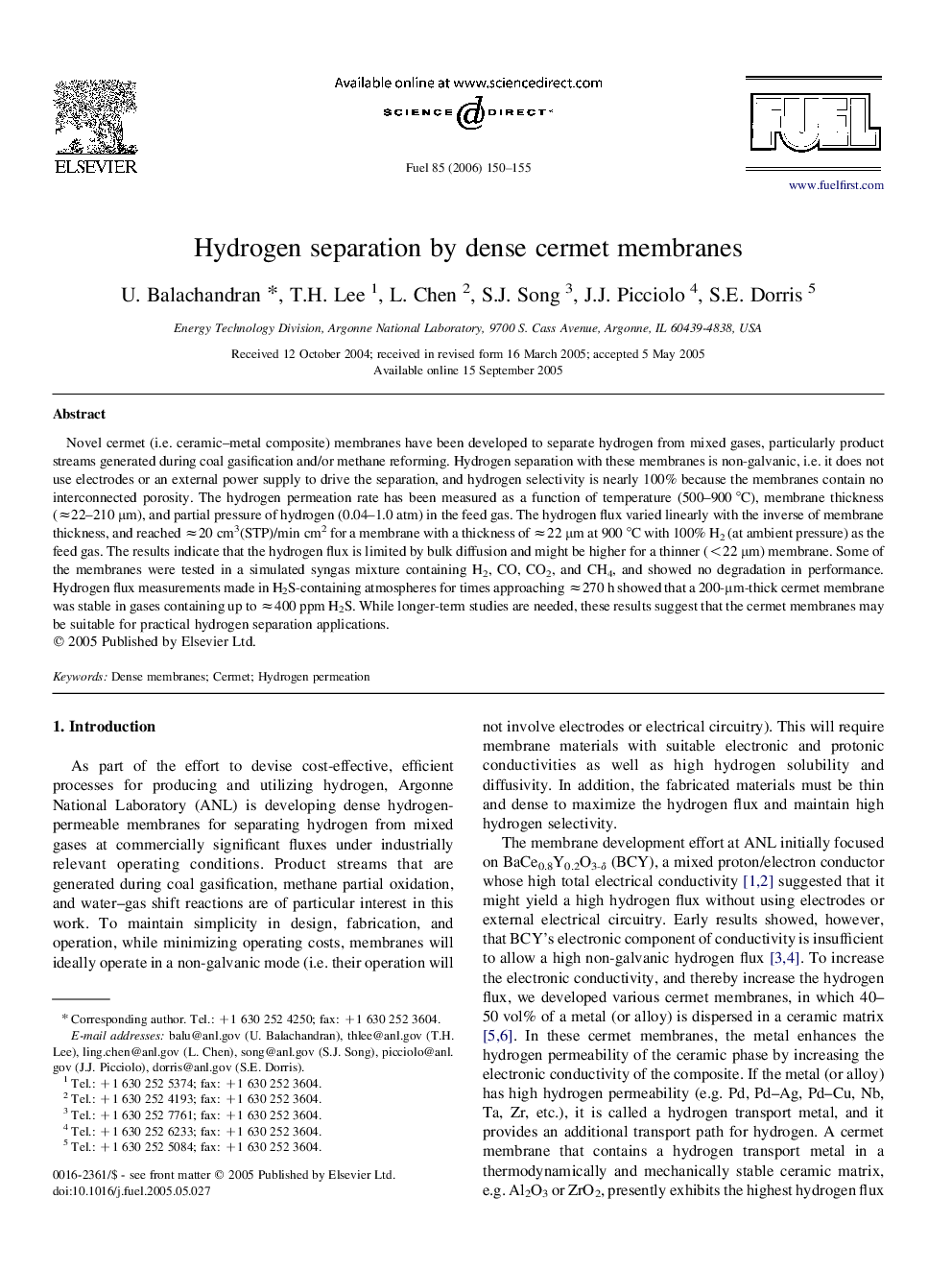| Article ID | Journal | Published Year | Pages | File Type |
|---|---|---|---|---|
| 208737 | Fuel | 2006 | 6 Pages |
Novel cermet (i.e. ceramic–metal composite) membranes have been developed to separate hydrogen from mixed gases, particularly product streams generated during coal gasification and/or methane reforming. Hydrogen separation with these membranes is non-galvanic, i.e. it does not use electrodes or an external power supply to drive the separation, and hydrogen selectivity is nearly 100% because the membranes contain no interconnected porosity. The hydrogen permeation rate has been measured as a function of temperature (500–900 °C), membrane thickness (≈22–210 μm), and partial pressure of hydrogen (0.04–1.0 atm) in the feed gas. The hydrogen flux varied linearly with the inverse of membrane thickness, and reached ≈20 cm3(STP)/min cm2 for a membrane with a thickness of ≈22 μm at 900 °C with 100% H2 (at ambient pressure) as the feed gas. The results indicate that the hydrogen flux is limited by bulk diffusion and might be higher for a thinner (<22 μm) membrane. Some of the membranes were tested in a simulated syngas mixture containing H2, CO, CO2, and CH4, and showed no degradation in performance. Hydrogen flux measurements made in H2S-containing atmospheres for times approaching ≈270 h showed that a 200-μm-thick cermet membrane was stable in gases containing up to ≈400 ppm H2S. While longer-term studies are needed, these results suggest that the cermet membranes may be suitable for practical hydrogen separation applications.
